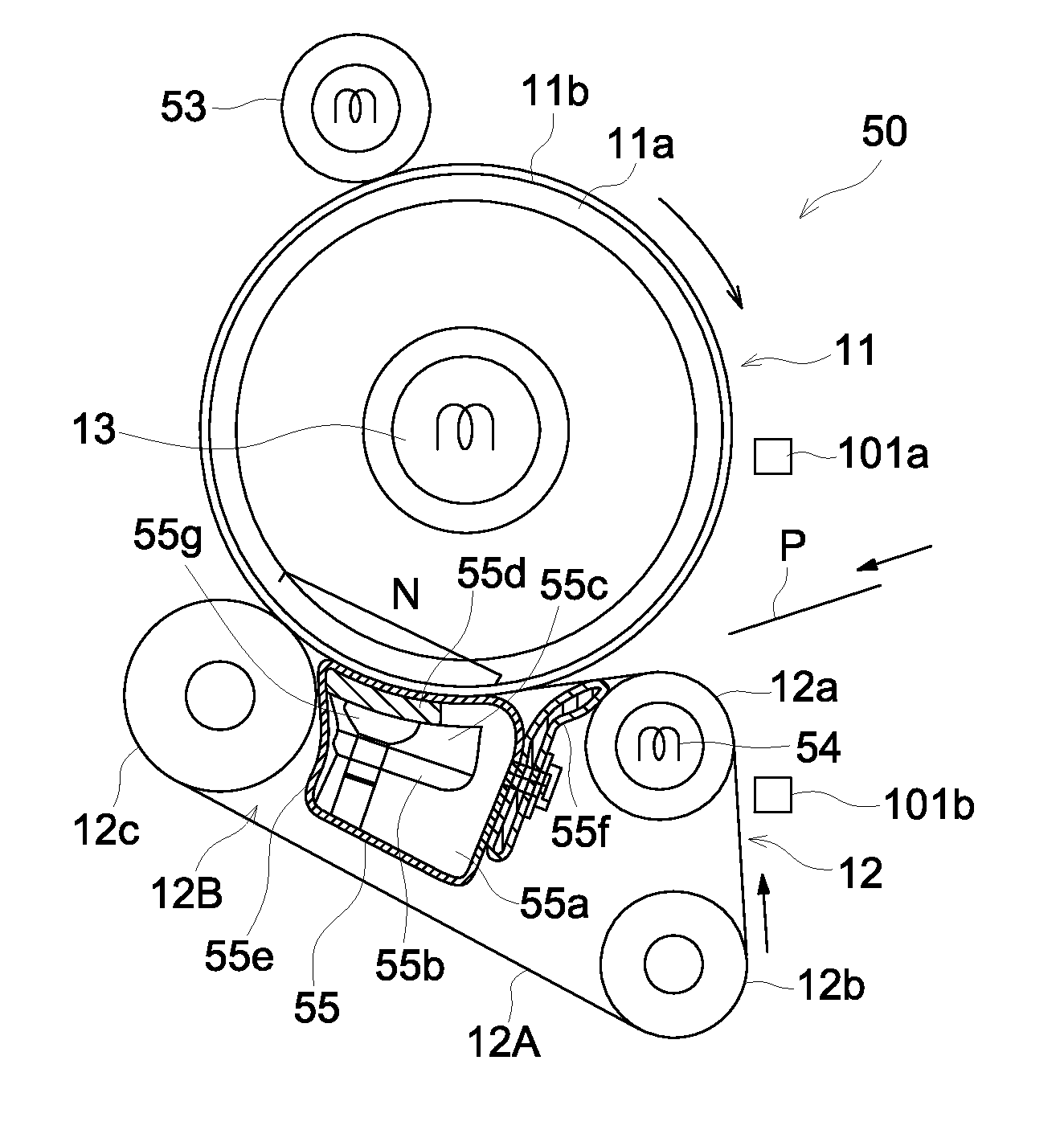Image forming method
a technology of image and forming method, applied in the field of image forming method, can solve the problems of inability to rotate, slippage of images, microscopic wrinkles, etc., and achieve the effect of enhancing gloss and inhibiting the occurrence of slippage of images
- Summary
- Abstract
- Description
- Claims
- Application Information
AI Technical Summary
Benefits of technology
Problems solved by technology
Method used
Image
Examples
example 1
[0178]Step (a-1): Preparation of Resin Particle Dispersion
(1) First Polymerization:
[0179]Into a 5 liter reaction vessel fitted with a stirrer, a temperature sensor, a condenser and a nitrogen introducing device was placed a surfactant solution and the liquid temperature was raised to 80° C., while stirring at a rate of 230 rpm under a nitrogen gas stream. The surfactant solution contained 2 parts by mass of an anionic surfactant (sodium dodecylbenzenesulfonate, which is hereinafter also denoted as SDS) and 2900 parts by mass of deionized water. To the surfactant solution was added 9 parts by mass of a polymerization initiator (potassium persulfate, which is hereinafter also denoted as KPS). Further thereto, a monomer solution comprised of 550 parts by mass of styrene, 280 parts by mass of n-butyl acrylate, 45 parts by mass of methacrylic acid and 14.5 parts by mass of n-octyl mercaptan was dropwise added over 3 hours and after completing the addition, the reaction mixture was mainta...
example 2
[0195]A toner (2) comprised of toner particles (2) was prepared in the same manner as in Example 1, except that the dispersion (B1) of resin particles (B1) used in the step (d) was replaced by a dispersion (B2) of resin particles (B2), and the amounts of the dispersion (A1), the dispersion (B2) and deionized water were changed to 298 parts by mass (solids), 138 parts by mass (solids) and 1695 parts by mass, respectively.
Step (b): Preparation of Resin Particle Dispersion (B2)
[0196]Into a 5 liter reaction vessel fitted with a stirrer, a temperature sensor, a condenser, and a nitrogen introducing device was placed a surfactant solution and the liquid temperature was raised to 80° C. with stirring at a rate of 230 rpm under a nitrogen gas stream. The surfactant solution composed of 1.5 parts by mass of an anionic surfactant, sodium dodecylsulfate (SDS) and 1550 parts by mass of deionized water. To the surfactant solution was added 15 parts by mass of a polymerization initiator, sodium p...
example 3
[0197]A toner (3) comprised of toner particles (3) was prepared in the same manner as in Example 1, except that the dispersion (B1) of resin particles (B1) used in the step (d) was replaced by a dispersion (B3) of resin particles (B3), and the amounts of the dispersion (A1), the dispersion (B3) and deionized water were changed to 413 parts by mass (solids), 23 parts by mass (solids) and 1695 parts by mass, respectively.
Step (b): Preparation of Dispersion (B3) of Resin Particles (B3)
[0198]Into a 5 liter reaction vessel fitted with a stirrer, a temperature sensor, a condenser and a nitrogen introducing device was placed a surfactant solution and the liquid temperature was raised to 80° C. with stirring at a rate of 230 rpm under a nitrogen gas stream. The surfactant solution was composed of 3.6 parts by mass of an anionic surfactant (SDS) and 1550 parts by mass of deionized water. To the surfactant solution was added 15 parts by mass of a polymerization initiator (KPS). Further theret...
PUM
 Login to View More
Login to View More Abstract
Description
Claims
Application Information
 Login to View More
Login to View More - R&D
- Intellectual Property
- Life Sciences
- Materials
- Tech Scout
- Unparalleled Data Quality
- Higher Quality Content
- 60% Fewer Hallucinations
Browse by: Latest US Patents, China's latest patents, Technical Efficacy Thesaurus, Application Domain, Technology Topic, Popular Technical Reports.
© 2025 PatSnap. All rights reserved.Legal|Privacy policy|Modern Slavery Act Transparency Statement|Sitemap|About US| Contact US: help@patsnap.com



